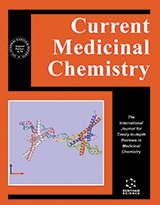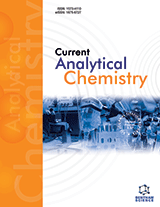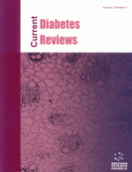
Abstract
Neurodegenerative diseases are characterized by selective and progressive degeneration of neuronal population in the brain, and associated behavioural, motor, psychiatric and cognitive impairments. Aggregation of pathogenic proteins, mitochondrial dysfunction, oxidative stress, transcriptional dysfunction and apoptosis play an important role in the pathogenesis of neurodegenerative disorders such as Parkinson’s disease, Huntington’s disease, Alzheimer’s disease and Amyotrophic lateral sclerosis. Therefore, novel therapies that target each of these mechanisms may be effective in abating the symptoms and slow down the onset and progression of neurodegenerative disorders. This review offers insights into the tremendous utility and versatility of peptides such as neurotrophins, neurotrophic factors (NGF, BDNF and GDNF), neuropeptides, mitochondrial targeted antioxidants/peptides, MitoQ, neurturin, and β-sheet breaker peptides to address the mechanisms and pathogenesis associated with neurodegenerative disorders.
Keywords: Alzheimer's disease, Amyotrophic lateral sclerosis, Huntington's disease, mitochondrial dysfunction, neurodegenerative diseases, neuropeptide, neurotrophin, Parkinson's disease.
Current Medicinal Chemistry
Title:Peptide Therapeutics in Neurodegenerative Disorders
Volume: 21 Issue: 23
Author(s): Shashi Kant Tiwari and Rajnish K. Chaturvedi
Affiliation:
Keywords: Alzheimer's disease, Amyotrophic lateral sclerosis, Huntington's disease, mitochondrial dysfunction, neurodegenerative diseases, neuropeptide, neurotrophin, Parkinson's disease.
Abstract: Neurodegenerative diseases are characterized by selective and progressive degeneration of neuronal population in the brain, and associated behavioural, motor, psychiatric and cognitive impairments. Aggregation of pathogenic proteins, mitochondrial dysfunction, oxidative stress, transcriptional dysfunction and apoptosis play an important role in the pathogenesis of neurodegenerative disorders such as Parkinson’s disease, Huntington’s disease, Alzheimer’s disease and Amyotrophic lateral sclerosis. Therefore, novel therapies that target each of these mechanisms may be effective in abating the symptoms and slow down the onset and progression of neurodegenerative disorders. This review offers insights into the tremendous utility and versatility of peptides such as neurotrophins, neurotrophic factors (NGF, BDNF and GDNF), neuropeptides, mitochondrial targeted antioxidants/peptides, MitoQ, neurturin, and β-sheet breaker peptides to address the mechanisms and pathogenesis associated with neurodegenerative disorders.
Export Options
About this article
Cite this article as:
Tiwari Kant Shashi and Chaturvedi K. Rajnish, Peptide Therapeutics in Neurodegenerative Disorders, Current Medicinal Chemistry 2014; 21 (23) . https://dx.doi.org/10.2174/0929867321666140217125857
| DOI https://dx.doi.org/10.2174/0929867321666140217125857 |
Print ISSN 0929-8673 |
| Publisher Name Bentham Science Publisher |
Online ISSN 1875-533X |
Call for Papers in Thematic Issues
Advances in Medicinal Chemistry: From Cancer to Chronic Diseases.
The broad spectrum of the issue will provide a comprehensive overview of emerging trends, novel therapeutic interventions, and translational insights that impact modern medicine. The primary focus will be diseases of global concern, including cancer, chronic pain, metabolic disorders, and autoimmune conditions, providing a broad overview of the advancements in ...read more
Approaches to the treatment of chronic inflammation
Chronic inflammation is a hallmark of numerous diseases, significantly impacting global health. Although chronic inflammation is a hot topic, not much has been written about approaches to its treatment. This thematic issue aims to showcase the latest advancements in chronic inflammation treatment and foster discussion on future directions in this ...read more
Cellular and Molecular Mechanisms of Non-Infectious Inflammatory Diseases: Focus on Clinical Implications
The Special Issue covers the results of the studies on cellular and molecular mechanisms of non-infectious inflammatory diseases, in particular, autoimmune rheumatic diseases, atherosclerotic cardiovascular disease and other age-related disorders such as type II diabetes, cancer, neurodegenerative disorders, etc. Review and research articles as well as methodology papers that summarize ...read more
Chalcogen-modified nucleic acid analogues
Chalcogen-modified nucleosides, nucleotides and oligonucleotides have been of great interest to scientific research for many years. The replacement of oxygen in the nucleobase, sugar or phosphate backbone by chalcogen atoms (sulfur, selenium, tellurium) gives these biomolecules unique properties resulting from their altered physical and chemical properties. The continuing interest in ...read more
 97
97
- Author Guidelines
- Graphical Abstracts
- Fabricating and Stating False Information
- Research Misconduct
- Post Publication Discussions and Corrections
- Publishing Ethics and Rectitude
- Increase Visibility of Your Article
- Archiving Policies
- Peer Review Workflow
- Order Your Article Before Print
- Promote Your Article
- Manuscript Transfer Facility
- Editorial Policies
- Allegations from Whistleblowers
- Announcements
Related Articles
-
Editorial: Neurodegenerative Disorders: Synthesis, Drug Delivery Strategies and Biological Evaluation of New Therapeutic Agents
Central Nervous System Agents in Medicinal Chemistry Quetiapine Modulates Conditioned Anxiety and Alternation Behavior in Alzheimer’s Transgenic Mice
Current Alzheimer Research Editorial (Thematic Issue: Small Molecule Therapeutics for Alzheimer’s Disease)
Current Alzheimer Research Oxytosis: A Novel Form of Programmed Cell Death
Current Topics in Medicinal Chemistry Neurotransmitter Dysfunction and Neurotransmitter Replacement Therapy as Part of Frontotemporal Dementia Treatment
Current Psychiatry Reviews Cdk5: A Key Player at Neuronal Synapse with Diverse Functions
Mini-Reviews in Medicinal Chemistry Mechanisms of Neuroprotection by Polyphenols
Current Medicinal Chemistry - Central Nervous System Agents Developmental Expression and Dysregulation of miR-146a and miR-155 in Down's Syndrome and Mouse Models of Down's Syndrome and Alzheimer's Disease
Current Alzheimer Research Computational Methods for De novo Protein Design and its Applications to the Human Immunodeficiency Virus 1, Purine Nucleoside Phosphorylase, Ubiquitin Specific Protease 7, and Histone Demethylases
Current Drug Targets HspB5/αB-Crystallin: Properties and Current Progress in Neuropathy
Current Neurovascular Research Biomarkers in Hypertension and Hypertension-related Disorders
Current Medicinal Chemistry The Cell Cycle and Hormonal Fluxes in Alzheimer Disease: A Novel Therapeutic Target
Current Pharmaceutical Design The Potential of Serratiopetidase and Lumbrokinase for the Degradation of Prion Peptide 106-126 - an <i>In Vitro</i> and <i>In Silico</i> Perspective
CNS & Neurological Disorders - Drug Targets Nanocapsulated Ascorbic Acid in Combating Cerebral Ischemia Reperfusion- Induced Oxidative Injury in Rat Brain
Current Alzheimer Research Natural Compounds with Proteasome Inhibitory Activity for Cancer Prevention and Treatment
Current Protein & Peptide Science Neuropharmacological Study on Capsaicin in Scopolamine-injected Mice
Current Alzheimer Research Triptolide Rescues Spatial Memory Deficits and Amyloid-β Aggregation Accompanied by Inhibition of Inflammatory Responses and MAPKs Activity in APP/PS1 Transgenic Mice
Current Alzheimer Research Cyclosporin and Organ Specific Toxicity: Clinical Aspects, Pharmacogenetics and Perspectives
Current Clinical Pharmacology Lithium and its Neuroprotective and Neurotrophic Effects: Potential Treatment for Post-Ischemic Stroke Sequelae
Current Drug Targets Regulation of Gene Expression by TDP-43 and FUS/TLS in Frontotemporal Lobar Degeneration
Current Alzheimer Research


























